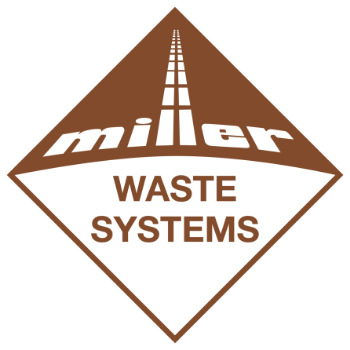Awareness of the importance of sustainability and eco-friendliness are on the rise, and one of the best ways to reduce your environmental impact is by reusing household items. Repurposing everyday items not only conserves resources but sparks your creativity. You’ll be amazed at the practical uses for items you might otherwise discard.
At Miller Waste, we are committed to capturing the value of organic and inorganic material at our recycling and waste to energy facilities. We send recyclables to Material Recovery Facilities, where material is separated by type and processed for alternative uses to offset the need for manufacturers to harvest or extract virgin materials. We also transform food waste into renewable heat, electricity, and a potent liquid fertilizer for local crops at Escarpment Renewables, Miller’s waste to energy facility.
With these sustainable initiatives in mind, we invite you to explore seven ways you can make a difference by repurposing items within your own household.

Old Clothes
Do you have a collection of old garments gathering dust, with little holes or stains? Before sending them to the waste bin, consider transforming them into handy cleaning cloths. These versatile fabric pieces can tackle household chores with ease and can be tossed into the washer, ready for reuse. Moreover, they come in handy for minor home projects like painting a room. If you’re interested in exploring more ways to give your clothing a second chance and reduce waste, be sure to check out our other blog on this topic.
Egg Cartons

If you’re a fan of your daily dose of eggs, here’s an idea that will make you appreciate your egg cartons even more. Rather than discarding the carton after your last egg, imagine all the fresh produce and plants you could nurture in those little compartments. Egg cartons are perfect for starting seeds, with their individual sections offering a nurturing environment. Once your green friends have outgrown their cozy homes and are ready for larger pots, simply tear up the carton and place it in the compost bin, completing the cycle.
Plastic Water Bottles
Give your plastic bottles a second life by cutting them in half to create two convenient scoops. These repurposed bottle halves serve admirably as scoops for pet food, or even for dispersing salt on your driveway during the winter months.
Cardboard Boxes
Shoeboxes are wonderfully versatile and serve multiple purposes. Consider turning your extra ones into practical storage containers or keepsake boxes. Just bear in mind that once painted, a box becomes non-recyclable, so choose your artistic endeavors wisely.
Ice Cream Tubs
Like cardboard boxes, ice cream tubs offer an excellent way to organize small items such as screws and bolts. Simply give the container a thorough cleaning and add a piece of tape or label for easy identification, and voila – you have a convenient and reusable storage solution.

Old Mugs
For those of us who harbor a passion for mugs, it can be tough to part with beloved old, coffee-stained ones. Instead of bidding them farewell, repurpose them as stylish pen and pencil holders for your desk. Plus, similar to egg cartons, a mug can serve as a fantastic seed starter!
Takeaway Containers
Have you ever wondered where all your food containers seem to vanish? Before you reach for new ones at the store, save those takeout containers from your next meal out. They’re the perfect size for packing your lunches and help minimize unnecessary waste.
In a world increasingly focused on sustainability, reusing everyday household items is a simple yet impactful way to contribute to a greener future. So, the next time you’re tempted to toss something aside, think about the innovative and eco-friendly potential it holds. If you’re eager to explore additional ways to contribute to environmental preservation by minimizing waste, we invite you to read “7 Ways to Reduce Your Household Waste,” for further inspiration.
